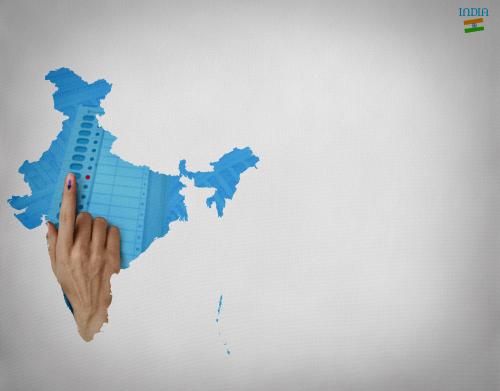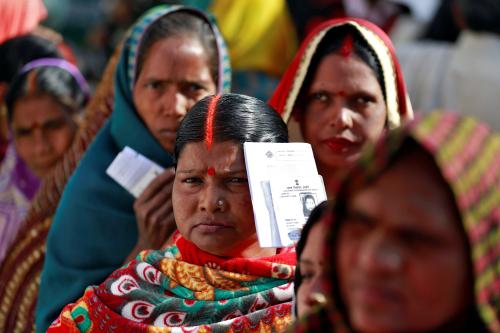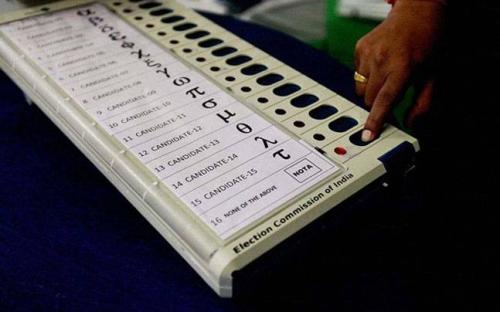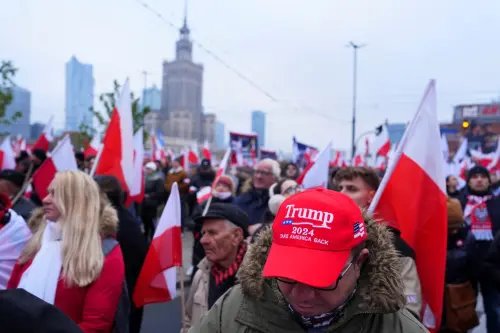Content from the Brookings Institution India Center is now archived. After seven years of an impactful partnership, as of September 11, 2020, Brookings India is now the Centre for Social and Economic Progress, an independent public policy institution based in India.
The following blog post is based on “Women in Party Politics,” a 2014 working paper by Shamika Ravi & Rohan Sandhu.
In a democratic polity, political representation is an inherent aspect of political participation. In this view, whether or not women are able to exercise political participation depends, to a large extent, on the terms of their inclusion and the extent to which the rules of the game enable or allow for their representation. Reservation is an affirmative action, aimed at political inclusion and encouraging participation of women in governance. Across the world, countries have introduced reservation or quotas for women as a means to counter entrenched socio-political structures that upheld male domination of politics. Understanding the facilitators and barriers to women’s leadership and exercise of political opportunities is an important issue within the larger landscape of women’s participation in politics.
One way to examine this issue is to analyse the number of women who are given tickets to contest elections and the significance of women leaders within political parties. Using Ravi & Sandhu (2014)’s paper as a motivation, this blog aims to summarise and analyse the magnitude of women contesting elections using data from the Election Commission of India (ECI).
ECI data from the 16th Lok Sabha Elections in 2014 shows that of the 8,251[i] candidates who contested the elections, only 668—a mere 8.1%—were women. Of these, the Indian National Congress (INC) gave out 59 tickets while the Bharatiya Janata Party extended 37 tickets. Significantly, the largest share of female candidates contested the polls on independent tickets.
In the 16th Lok Sabha elections, 134 tickets were extended to female candidates by national parties—a marginal improvement over the 110 tickets that were extended in the 2009 General Elections. This number rose marginally to 141[ii] in 2014. Clearly, political parties are fielding significantly lower number of female candidates than the benchmark of 33%.
One of the key findings of Ravi & Sandhu (2014) is that a large number of women candidates run on an independent ticket, due to the lack of party support— a trend that has continued since 1989. The authors further analyse this lack of party support by looking at data on the number of tickets national and state parties extended to female candidates as a percent of the total candidates fielded. In their analysis of data from 1989-2009, they show that between 1991 and 1996, there was a spike in the participation of both total independents and women independents, but while the total increased by 93%, women independents increased by 175%. 1998 saw a sharp dip in independent candidature after the ECI increased the security deposit of candidates from Rs. 500 to Rs. 10,000. However, between every general election, the growth in women independents has been larger than independents in general.
In general, even when political parties in India set internal benchmarks or quotas to include women, they end up flouting their own rules. This indicates that internal party structures remain unsupportive of women’s political participation. One of the key failings is the lack of a pipeline effect. The absence of a nurtured talent pool of women candidates is the central piece missing from this puzzle. In the upcoming 2019 Lok Sabha elections, political parties such as the All India Trinamool Congress (TMC) and the Biju Janata Dal (BJD) have released candidate lists with 33% women, a welcome step in the right direction.
Going forward, Indian political parties must realise their critical role as gatekeepers in women’s political participation. Fundamental reforms at the party level will serve as a necessary and strategic compliment to the Women’s Reservation Bill. Even if the Bill is derailed further, it shouldn’t stop political parties from making internal structures more conducive to women entering politics. Political parties must lower entry barriers for women in public life. In doing so, they will create a robust pipeline of future women leaders for India.
[i] https://eci.gov.in/files/file/2841-state-wise-candidate-data-summary/
[ii] https://eci.gov.in/files/file/2841-state-wise-candidate-data-summary/
The Brookings Institution is committed to quality, independence, and impact.
We are supported by a diverse array of funders. In line with our values and policies, each Brookings publication represents the sole views of its author(s).





Commentary
Why women candidates are more likely to run as independents
May 9, 2019